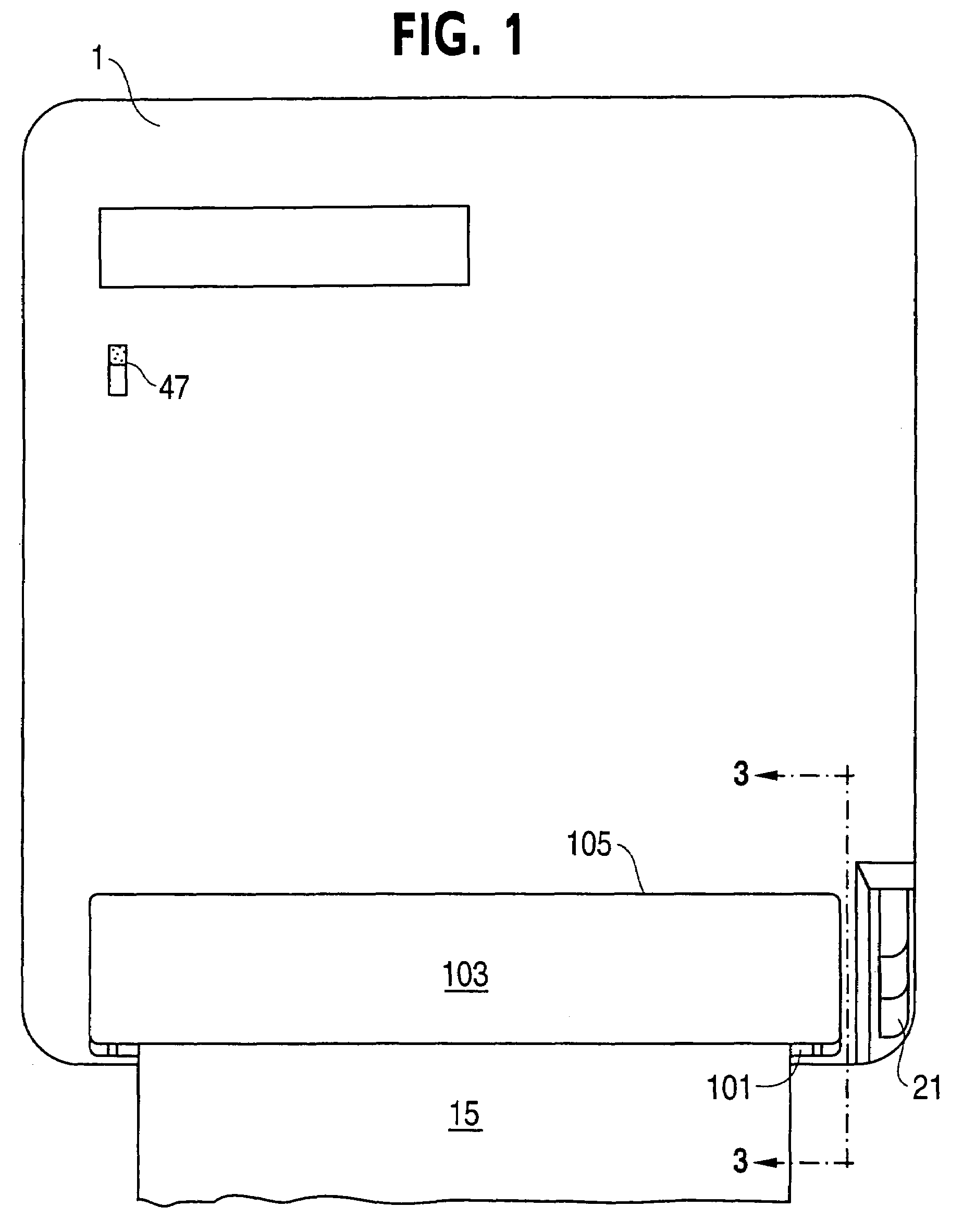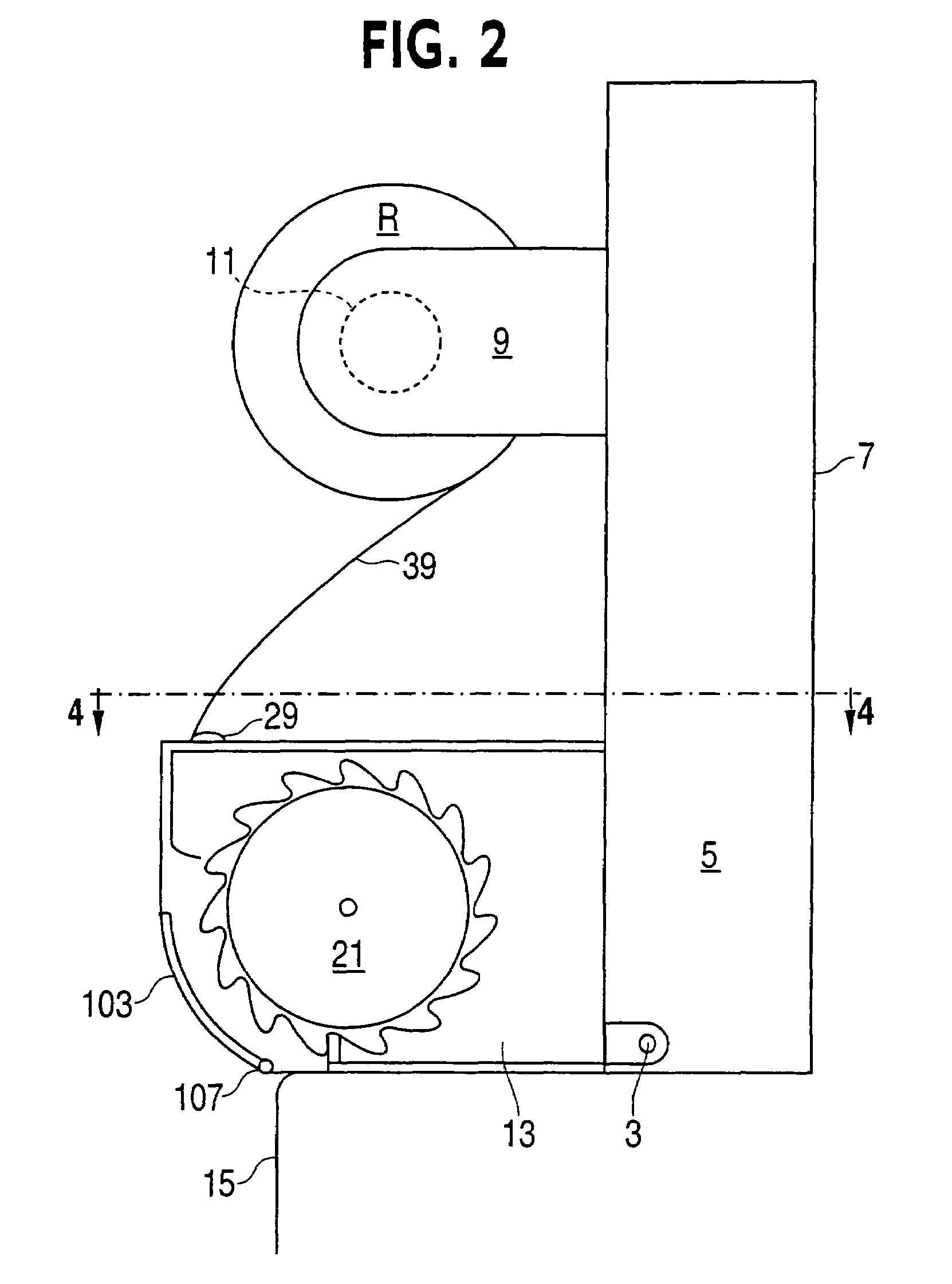Web transfer mechanism for flexible sheet dispenser
a dispenser and flexible technology, applied in the field of flexible sheet dispensers, can solve the problems of folded towels, unacceptable to many consumers, and continuous exposure of soiled toweling, and achieve the effect of foolproof dispenser maintenance and simple and intuitive loading/setting characteristics
- Summary
- Abstract
- Description
- Claims
- Application Information
AI Technical Summary
Benefits of technology
Problems solved by technology
Method used
Image
Examples
Embodiment Construction
[0030]Referring to FIGS. 1 and 2, it is seen that a dispenser in accordance with the present invention may employ a generally conventional-style exterior dispenser cabinet, e.g., the type used in the commercially available Georgia-Pacific P-12 dispenser. The cabinet shown includes a five-sided cover 1 that is pivotally mounted, at a pivot point 3 (see FIG. 2), to a relatively shallow tray-like base member 5. Base member 5 has a back wall 7 with appropriate openings (not shown) to accommodate fasteners for attachment of the dispenser to a wall.
[0031]A reserve roll R of flexible sheet material, such as paper toweling, may be suitably supported between a pair of cantilever mounted wing members 9 extending from the inside surface of back wall 7. Each wing member carries a cup 11 at its free end, which enters into the opposite ends of the core of reserve roll R. The mounting of reserve roll R within the dispenser housing is conventional, and thus no further discussion of this structure i...
PUM
| Property | Measurement | Unit |
|---|---|---|
| flexible | aaaaa | aaaaa |
| movement | aaaaa | aaaaa |
| length | aaaaa | aaaaa |
Abstract
Description
Claims
Application Information
 Login to View More
Login to View More - R&D
- Intellectual Property
- Life Sciences
- Materials
- Tech Scout
- Unparalleled Data Quality
- Higher Quality Content
- 60% Fewer Hallucinations
Browse by: Latest US Patents, China's latest patents, Technical Efficacy Thesaurus, Application Domain, Technology Topic, Popular Technical Reports.
© 2025 PatSnap. All rights reserved.Legal|Privacy policy|Modern Slavery Act Transparency Statement|Sitemap|About US| Contact US: help@patsnap.com



